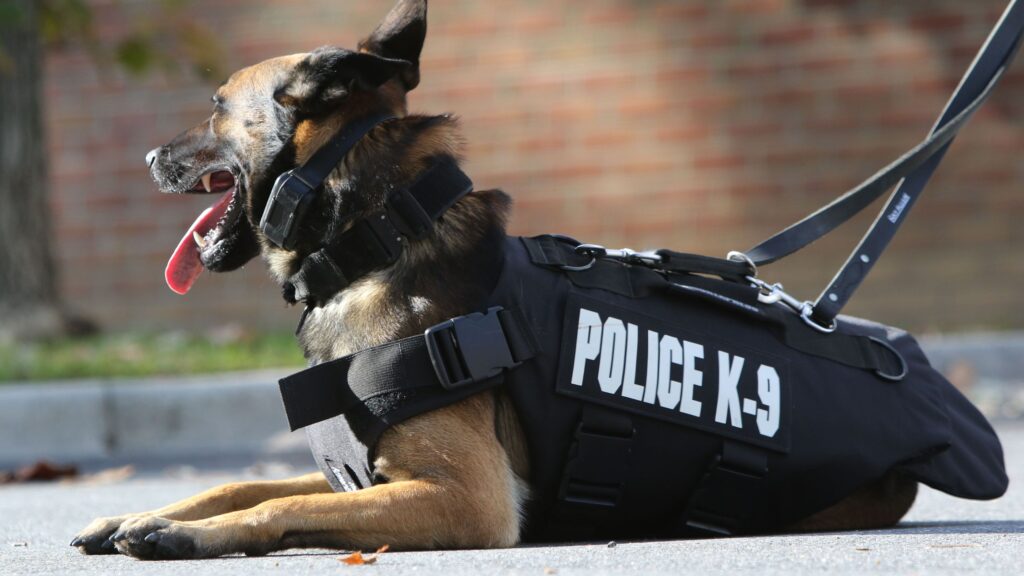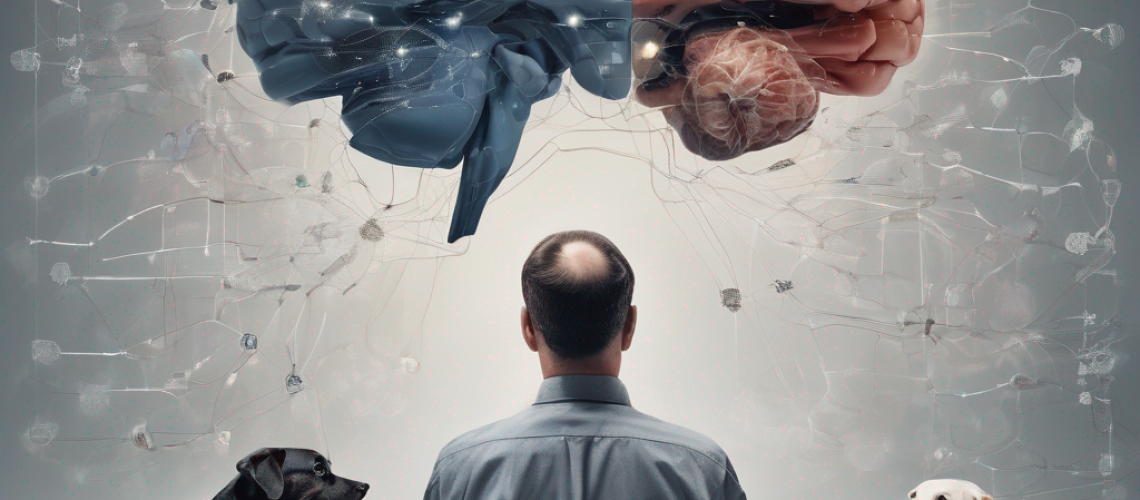In the captivating and intricate world of K-9 units, where the remarkable abilities of dogs are widely celebrated, the crucial role played by human handlers often fades into the background.
Beyond technical training, handlers carry a substantial weight of responsibility onto the field that extends far beyond the act of training a dog. In this article, we delve into the profound human dimension behind the handler-canine relationship, focusing on the emotional and psychological management, not only of the dog but also of the handler themselves.
The Handler’s Emotional Responsibility
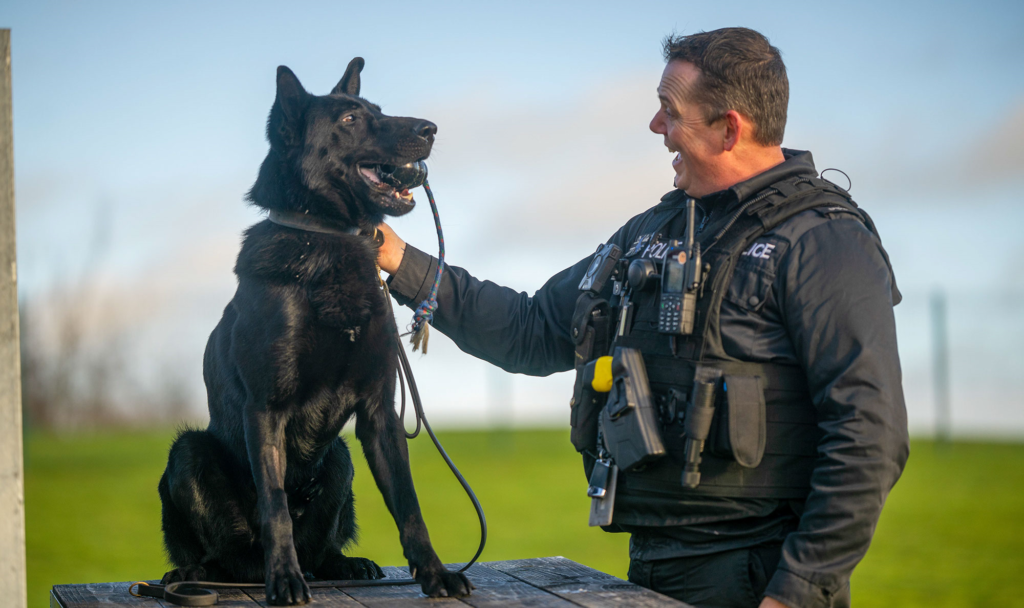
Eckhart Tolle, author of “The Power of Now,” emphasizes the significance of mental presence and awareness in experiencing the present moment. This concept holds particular relevance for handlers, as their training and work with dogs demand a state of complete presence. The handler must attune themselves not only to the dog’s actions but also to their own internal reactions. Effective management of their own emotions is imperative for establishing a serene and positive environment for the dog.
In the context of K-9 units, the handler’s emotional responsibility extends beyond their own emotions. The handler’s emotional state directly impacts the canine partner’s well-being and performance. Dogs are remarkably sensitive to human emotions and can mirror their handler’s feelings. A tense or anxious handler may inadvertently transmit stress to the dog, hindering their ability to perform optimally. On the other hand, an emotionally balanced handler can create an atmosphere of calm and trust, enhancing the dog’s focus and effectiveness.
Transitioning from Cartesian “Cause and Effect” to Quantum Understanding
In the realm of philosophy and science, the traditional Cartesian notion of “cause and effect” has given way to a more nuanced understanding influenced by quantum physics. Descartes’ idea posited a linear relationship where a cause directly produces a specific effect. However, quantum physics challenges this linear model, introducing the concept of interconnectedness and non-linearity.
In quantum physics, particles and events are interconnected in intricate ways. This interconnectedness implies that actions and outcomes are not solely determined by isolated causes, but rather by a complex web of influences and probabilities. This profound shift in perspective resonates with the concept of the handler’s emotional responsibility. The emotions and intentions of the handler create a web of influences that extend beyond simple cause and effect, impacting the dog’s behavior, perception, and overall experience.
Quantum Influence in Everyday Life
The principles of quantum physics extend beyond the laboratory and permeate our daily lives. Just as particles are connected in an intricate dance, our thoughts, emotions, and intentions shape the reality we experience. This concept invites us to recognize that our mental and emotional state influences the outcomes we encounter.
Returning to the realm of K-9 units, an emotionally aware and balanced handler operates in alignment with these quantum principles. By cultivating a positive emotional environment, the handler influences the dog’s state of mind and, consequently, their performance. This perspective underscores the profound responsibility that handlers bear, extending beyond traditional training techniques into the realm of quantum influence.
The Deep Connection Between Handler and Dog
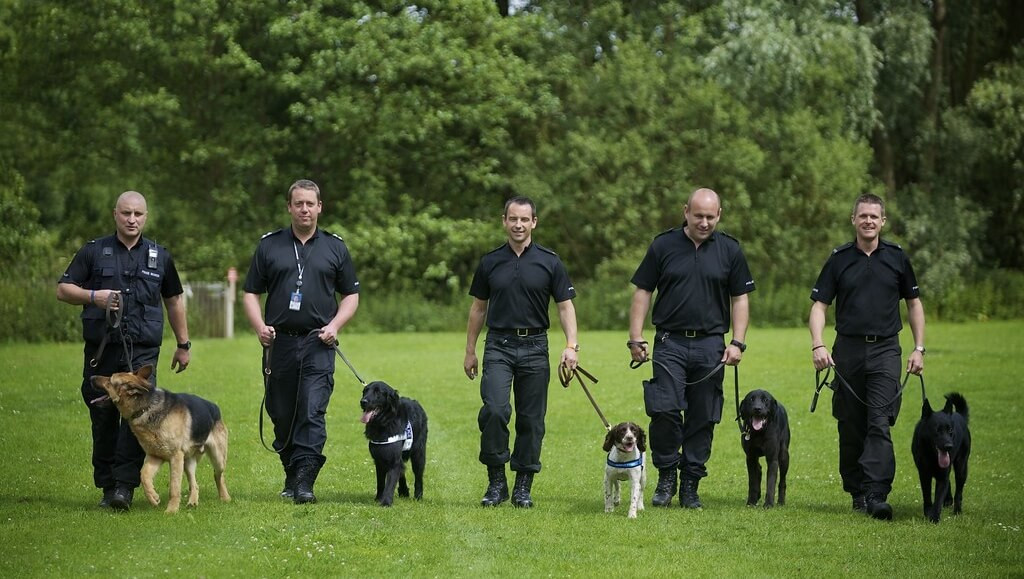
In the intricate tapestry of the K-9 world, the relationship shared between a handler and their faithful canine partner transcends the boundaries of mere language. It is a connection that resonates on a deeper, unspoken level—a silent symphony of mutual trust, unwavering loyalty, and shared purpose. As Eckhart Tolle eloquently put it in “The Power of Now,” “Realize deeply that the present moment is all you have. Make the NOW the primary focus of your life.”
This focus on the present moment is particularly poignant for handlers, whose interactions with their canine counterparts require a heightened sense of presence. The dynamic training sessions, joint missions, and daily interactions demand an intimate understanding not only of the dog’s physical capabilities but also of their emotional needs. Just as Tolle’s words encourage humans to be fully present, handlers must extend this mindful presence to their interactions with their four-legged partners.
Scientific insights have illuminated the profound emotional resonance that exists between humans and dogs. Neuroscientists have explored the neural mechanisms underlying human-animal relationships, revealing striking parallels. Dr. Gregory Berns, in his work “How Dogs Love Us,” utilized functional MRI scans to peer into the minds of dogs, uncovering neural patterns akin to human emotional centers when exposed to the scent of their owners. This remarkable neurobiological connection underscores the intricate emotional web that binds handlers and their K-9 companions.
Furthermore, oxytocin—the hormone often associated with nurturing and bonding—flows through the veins of both human and canine during moments of shared connection. A study published in the journal “Science” revealed elevated oxytocin levels in dogs and humans after positive social interactions, reinforcing the notion that an emotional bridge links our two species. This hormone, often referred to as the “bonding molecule,” forms an invisible thread woven through the handler-canine partnership, solidifying the emotional foundation on which it thrives.
In this shared emotional space, handlers become attuned to the nuanced cues of their canine partners. Much like a skilled conductor guiding an orchestra through intricate melodies, handlers interpret the subtle notes of their dog’s body language and behavior. This heightened emotional intelligence enables handlers to respond to the unique needs and feelings of their companions, fostering an environment of trust and security.
In return, dogs are adept at deciphering the emotional symphony of their handlers. They sense the cadence of human emotions, attuned to the subtlest shifts in energy and demeanor. In the words of Joseph Campbell, “The goal of life is to make your heartbeat match the beat of the universe, to match your nature with Nature.” The handler’s harmonious emotional state resonates through this energetic connection, serving as a guiding rhythm for the canine partner.
Ultimately, the profound bond between handler and dog is a testament to the interwoven threads of emotion, trust, and presence that unite them. As handlers embrace the wisdom of Tolle and the scientific revelations of Berns, they embody a profound truth: that the relationship they share with their K-9 companions is not just about training and tasks, but about the shared journey of emotions, experiences, and the present moment. In this union, handlers and dogs become co-authors of an unwritten tale, etching their legacy in the annals of the K-9 world.
The Science Behind Emotional Management
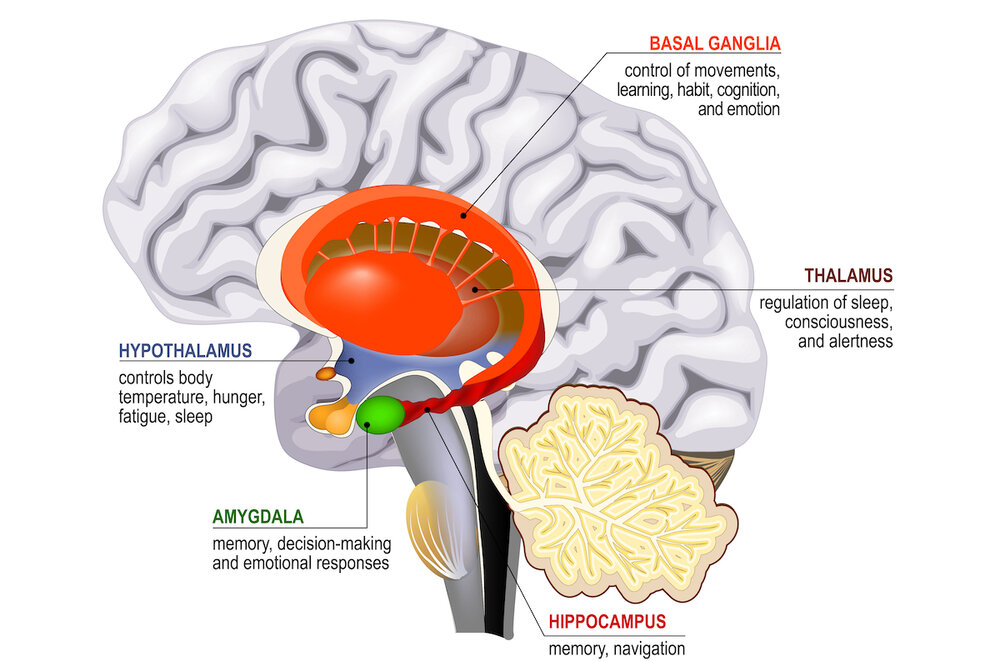
In the intricate dance between handler and K-9, the emotions of the handler are not confined to the realm of human experience alone. Dr. Joe Dispenza, a luminary in the field of neuroscience and personal development, has delved deep into the intricate interplay between the mind and the body. As Dispenza notes in his work “Becoming Supernatural,” “You are not doomed by your genes and hardwired to be a certain way for the rest of your life. A new science is emerging that empowers all human beings to create the reality they choose.”
This emerging science takes on a profound significance in the context of handler-canine dynamics. Just as an orchestra conductor’s movements influence the musicians’ performance, the handler’s emotional state orchestrates a symphony that resonates through the canine partner. The vibrations of tension, anxiety, or frustration conducted by the handler can reverberate through the energetic connection they share with their K-9 companion. This connection is not confined to the physical, but extends to the emotional and even physiological realms.
Quantum physics, a cornerstone of modern science, sheds illuminating light on the intricate mechanisms at play. The once-dominant Cartesian “cause and effect” model, rooted in a linear understanding of events, has given way to the non-linear and interconnected view of the quantum world. As physicist John Wheeler famously mused, “We live on an island surrounded by a sea of ignorance. As our island of knowledge grows, so does the shore of our ignorance.”
In the context of handlers and their canine partners, this shift in perspective is transformative. The handler’s emotional state, much like a pebble dropped into a pond, creates ripples that influence not only the dog’s behavior but also its perception of the world around it. The quantum entanglement between handler and dog enables emotional states to be transmitted and mirrored, shaping the responses and outcomes of their interactions.
In light of these insights, handlers stand at a unique nexus of influence—a point where thoughts, emotions, and intentions converge to shape reality. Just as Dispenza’s research suggests that individuals can reshape their own well-being through focused intention, handlers hold the power to mold the emotional landscape of their K-9 partner’s experience. By cultivating emotional mastery and embracing the principles of quantum interconnectedness, handlers embark on a journey of co-creation—a dance where emotions harmonize to produce a symphony of optimal performance and profound connection.
In the end, the science behind emotional management underscores the immense responsibility carried by handlers. Like alchemists of the emotional realm, they possess the ability to transmute tension into tranquility, anxiety into assurance, and frustration into focus. As they synchronize their emotional frequencies with the quantum tapestry of their canine companions, handlers become not just trainers, but architects of a shared emotional reality that shapes the very essence of their partnership.
In the intricate tapestry of the handler-canine partnership, the quest for optimal performance emerges as a delicate equilibrium—a finely tuned interplay of emotions, intentions, and actions. Just as an orchestra achieves its most captivating symphony through a harmonious blend of instruments, handlers and dogs must attain a state of balance to achieve exceptional results. As Dr. Joe Dispenza aptly articulates in “You Are the Placebo,” “The moment you believe that your thoughts actually have an effect, you have a effect.”
This belief, this acknowledgment of the intimate connection between mind and outcomes, is a cornerstone in the journey towards achieving the zenith of performance. The handler’s emotional management, like a maestro’s baton guiding a performance, orchestrates the dog’s responses and behaviors. The ripple effect of a calm, focused handler cascades through the energetic channels, influencing the dog’s mindset and actions.
But this equilibrium is a reciprocal one—a dance of energies that flows not just from handler to dog, but also from dog to handler. Recent research in the field of epigenetics has illuminated the capacity of emotions to create measurable changes in gene expression. As geneticist Moshe Szyf notes in “The Biology of Belief,” “Your mind can override genetic code.” This groundbreaking insight underscores the handler’s potential to transform not only their own emotional landscape but also the very physiological responses of their K-9 partner.
To attain this dynamic balance, handlers embark on a continuous journey of self-mastery. It is a commitment to deepening emotional awareness, cultivating resilience, and maintaining a positive mental state. Eckhart Tolle’s wisdom, as encapsulated in “A New Earth,” resonates powerfully: “The primary cause of unhappiness is never the situation but your thoughts about it.” In cultivating a positive mental environment, handlers lay the foundation for a resilient partnership.
Within this state of equilibrium, both handler and dog thrive. The handler’s heightened emotional intelligence enables them to read the subtlest nuances of the dog’s behavior, adapting training approaches with finesse. In turn, the dog responds to the reassuring energy of the handler, channeling focus and enthusiasm into their tasks.
As the handler refines their emotional management, they become an orchestrator of outcomes—a director of not only their own emotional state but also the emotional landscape of their canine companion. This synchronization is not just a matter of training mechanics; it is a journey that ventures into the very essence of consciousness, where thoughts become actions, and actions ripple through the quantum fabric of reality.
In this harmonious dance, the handler and dog become co-creators of excellence. Their energies converge to transcend the limits of traditional training paradigms, forging a partnership that echoes Dispenza’s words: “When you are able to elevate your emotional state and feel differently—truly feel differently—then new experiences can begin to find you.” Through emotional mastery, handlers unearth the extraordinary potential of the K-9, sculpting a legacy defined by remarkable accomplishments and an unbreakable bond.
